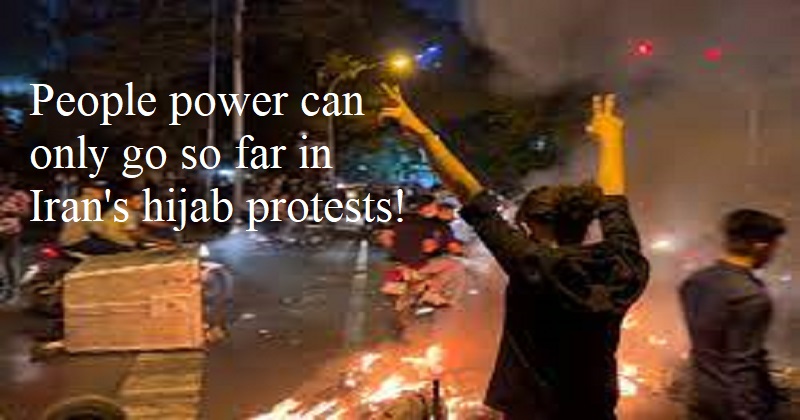
Iran is in the third week of protests sparked by the death of a young woman who was arrested for violating the country’s strict dress code. Her offence: the way she wore her headscarf showed strands of hair. Women in cities across Iran have reacted with fury, taking of their hijabs and throwing them into bonfires.
Despite the peaceful nature of the hijab-burning women’s rallies, the government reacted by waging a bloody crackdown. One advocacy group reported that 133 individuals had died as a result of the crackdowns by the beginning of October. The hijab protests, according to Iran analysts, were the biggest demonstrations since the ‘Green Revolution,’ which angered millions of Iranians over what they claimed was flagrant fraud in the elections that returned the conservative Mahmoud Ahmadinejad to the presidency.
The hijab demonstrations were spontaneous and leaderless, with anger spurred by social media postings. You need to be extremely optimistic to think that the rigid dress code imposed on Iranian women since the downfall of the Shah in 1979 has a chance of returning to the skirts that were not uncommon in Tehran in the 1960s and 70s.
How effective are mass demonstrations that lack organization and come together thanks to the powers of digital technology – Facebook, twitter, WhatsApp, Telegram etc. Early in the millennium, this way of trying to achieve change was often dubbed People Power. It had some influential critics. In an essay in the Atlantic magazine headlined Why Street Protests Don’t Work, Moises Naim said ‘aerial photos of anti-government marches show an intimidating sea of people demanding change’.
After decades of being a significant force for the spread of democracy, People Power has weakened. By the early 2000s, two in three protest movements demanding changes in policy succeeded. But by the end of the 2010s, the success rate has halved to one in three. It has declined again from the beginning of the present decade.
Zeynep Tufekci, a sociologist and professor at the University of North Carolina, wrote an opinion piece in the New York Times. She singled out the lack of a mechanism for translating people power into policy change. ‘The quickly sprung large movements often floundered for direction once the inevitable pushback came,’ she said. In the past, she says, a large demonstration was ‘an exclamation mark at the end of a sentence,’ but now it is ‘a sentence that begins with a question mark’.
Khomeini’s Iran’s Ayatollah would probably make a similar comment to George W. Bush about the size of the anti-war demonstrations in the run-up to the invasion of Iraq, if he were alive today. ‘Size of protest – it’s like deciding, well, I’m deciding policy based on a focus group,’ he said. One estimate says 36 million people across the globe took part in about 3,000 protests against the impending attack.

Post Your Comments